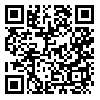Volume 21, Issue 86 (2024)
LIRE 2024, 21(86): 40-46 |
Back to browse issues page
Download citation:
BibTeX | RIS | EndNote | Medlars | ProCite | Reference Manager | RefWorks
Send citation to:



BibTeX | RIS | EndNote | Medlars | ProCite | Reference Manager | RefWorks
Send citation to:
GholamHossein Zadeh G G Z, Vatankhahan Esfahani E. The Function of Paratextual Elements in the Fictional Works of Leila Sadeghi. LIRE 2024; 21 (86) :40-46
URL: http://lire.modares.ac.ir/article-41-80870-en.html
URL: http://lire.modares.ac.ir/article-41-80870-en.html
1- , gholamho@modatrs.ac.ir
Abstract: (223 Views)
In contemporary literature, paratextual elements have emerged as a powerful tool for enhancing reader engagement and shaping the reception of literary works. Traditionally viewed as peripheral and secondary, these elements are now increasingly employed by modern authors as active agents in the construction and transmission of meaning. Leila Sadeghi is among those writers who consistently integrate paratextual features—such as cover design, dedications, and tables of contents—into the fabric of their narratives, to the extent that any reading which disregards them is rendered incomplete.
This study investigates the role of paratextual elements in meaning-making within Sadeghi’s fictional works, drawing upon Gérard Genette’s theory of intertextuality and paratextuality. Building upon Genette’s framework, Birk and Christ propose three core functions for paratextuality in digital literature: interpretive, commercial, and directive. These three functions are also considered in addressing the central research question. Employing a qualitative and analytical methodology, the study involves careful data collection, classification, and pattern recognition based on the selected theoretical models. The subsequent analysis reveals that paratextual elements in Sadeghi’s narratives perform what may be termed a complementary function—that is, they act as integral parts of the main text, essential for both narrative and non-narrative meaning-making. This article argues that the complementary function of paratext should be recognized as a defining stylistic feature of Leila Sadeghi’s literary approach.
This study investigates the role of paratextual elements in meaning-making within Sadeghi’s fictional works, drawing upon Gérard Genette’s theory of intertextuality and paratextuality. Building upon Genette’s framework, Birk and Christ propose three core functions for paratextuality in digital literature: interpretive, commercial, and directive. These three functions are also considered in addressing the central research question. Employing a qualitative and analytical methodology, the study involves careful data collection, classification, and pattern recognition based on the selected theoretical models. The subsequent analysis reveals that paratextual elements in Sadeghi’s narratives perform what may be termed a complementary function—that is, they act as integral parts of the main text, essential for both narrative and non-narrative meaning-making. This article argues that the complementary function of paratext should be recognized as a defining stylistic feature of Leila Sadeghi’s literary approach.
Article Type: Original Research |
Subject:
Contemporary Literature/ Story / Novel
Received: 2024/02/19 | Accepted: 2024/08/20 | Published: 2025/02/28
Received: 2024/02/19 | Accepted: 2024/08/20 | Published: 2025/02/28
Send email to the article author
| Rights and permissions | |
 |
This work is licensed under a Creative Commons Attribution-NonCommercial 4.0 International License. |








